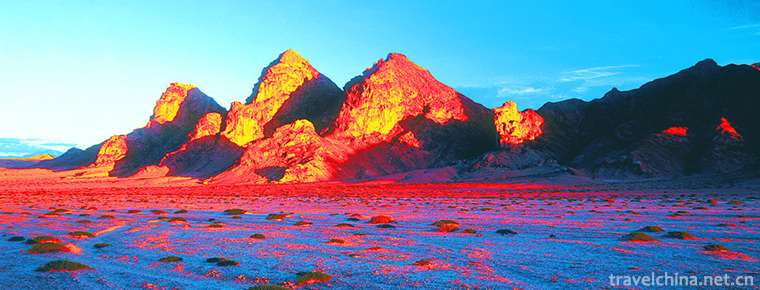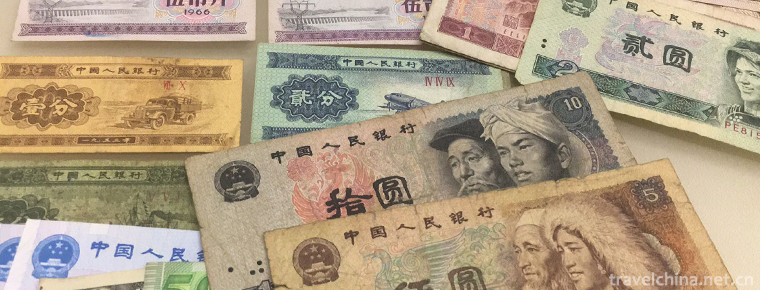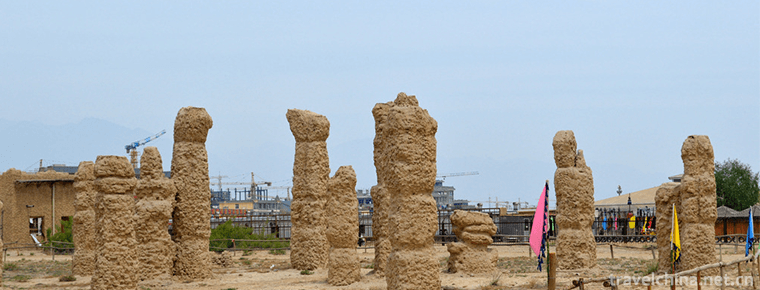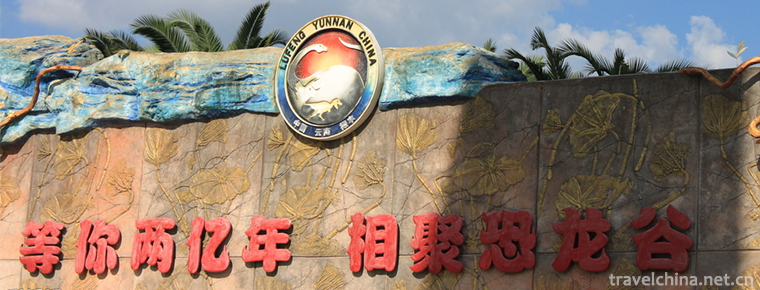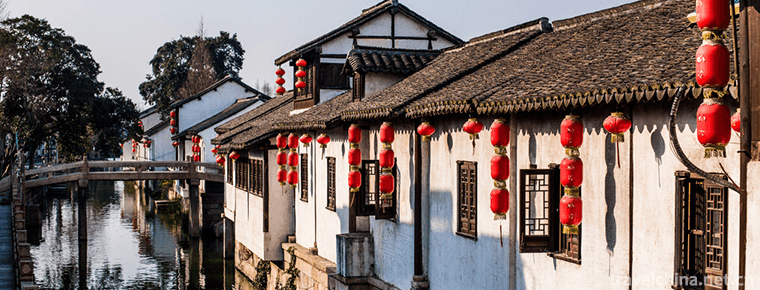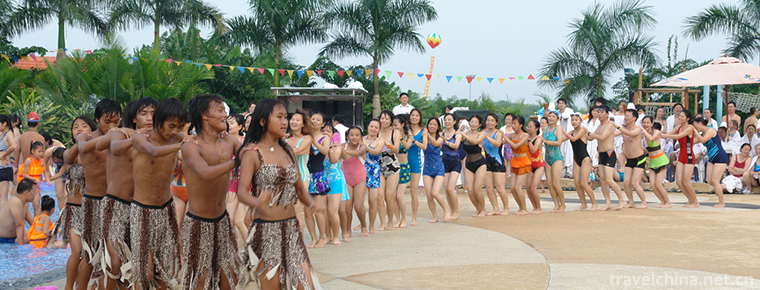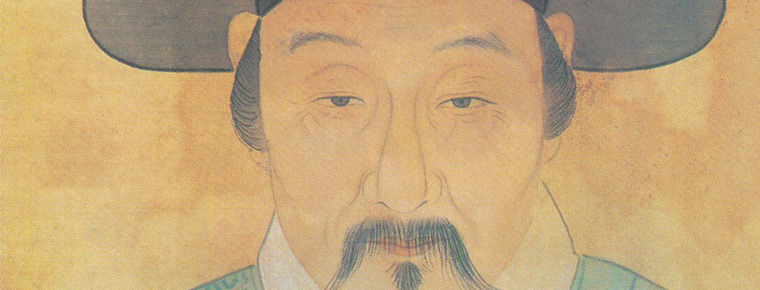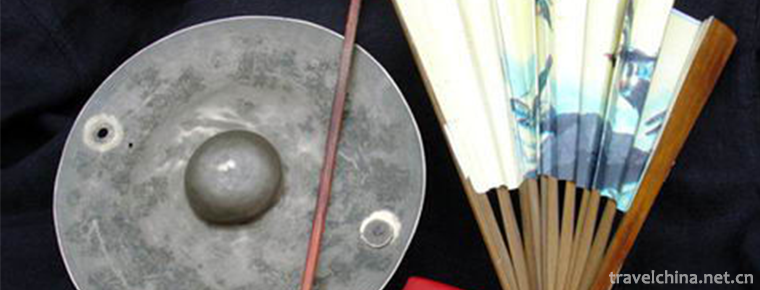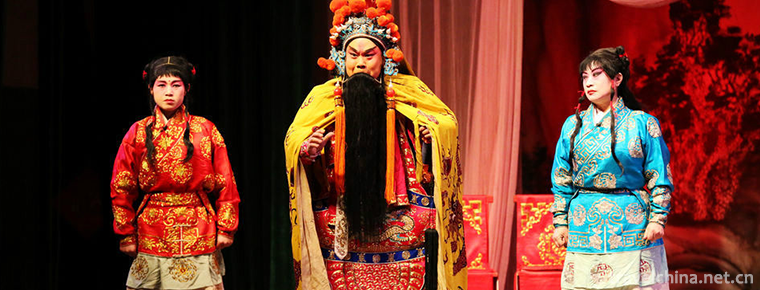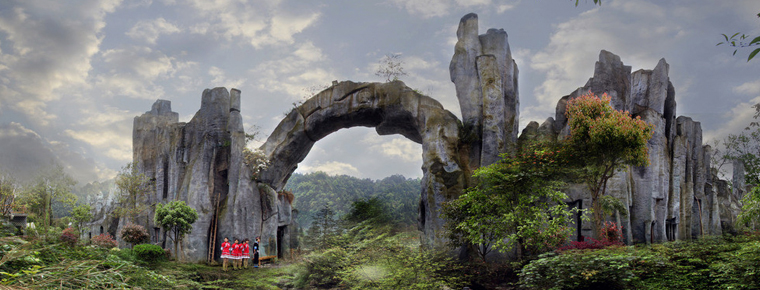Yushuizhai Scenic Area
Yushuizhai Scenic Area
Yushuizhai Scenic Area is a national AAAA level tourist area (spot), located in the north of Baisha Town, which consists of a series of scenic spots. Yushuizhai Scenic Area is a scenic spot with Naxi national culture as its core and perfect integration with natural landscape. It has now become the main tourist attraction in Lijiang. Yushuizhai is a sacred place of Dongba in the central part of the Naxi nationality, and is the source of the ancient city of Lijiang. The Natural Conservation Association of the United States designated Yushuizhai as the Dongba Cultural Heritage Base, Baisha Xile Heritage Base and Leba Dance Heritage Base to excavate, organize, inherit, research and display the ancient culture of the Naxi nationality. The Dongba Cultural Heritage Base in Yushuizhai retains the traditional and simple style of the Naxi nationality.
brief introduction
Yushuizhai Scenic Area is a national AAAA level tourist area (spot), located in the north of Baisha Town, which consists of a series of scenic spots. Yushuizhai Scenic Area is a scenic spot with Naxi national culture as its core and perfect integration with natural landscape. It has now become the main tourist attraction in Lijiang.
Yushuizhai is a sacred place of Dongba in the central part of the Naxi nationality, and is the source of the ancient city of Lijiang. The Natural Conservation Association of the United States designated Yushuizhai as the Dongba Cultural Heritage Base, Baisha Xile Heritage Base and Leba Dance Heritage Base to excavate, organize, inherit, research and display the ancient culture of the Naxi nationality. Yushuizhai Dongba Cultural Heritage Base, which retains the traditional and simple style of the Naxi nationality and reflects the beautiful natural landscape around it, truly embodies the traditional concept of "harmonious development between man and nature", the essence of Dongba culture.
Yushuizhai scenic spot in Lijiang is one of the main scenic spots in Lijiang. It is a cultural scenic spot with Naxi culture as its core and natural landscape as a whole. Yushuizhai is the base of Dongba culture inheritance. It retains the traditional and simple style of the Naxi people. Dongba village is built according to the traditional life style of the Naxi people. From the construction facilities to every detail of life, we can feel the traditional Naxi national culture.
Baisha fine music of the Naxi nationality is a musical miracle created by the ancestors of Naxi. It and the music of the Lijiang Tung Jing are both called the ancient music of Naxi. Lu Ji, former chairman of the Chinese Musicians Association, once sincerely praised Baisha Xile as a "living fossil of music". Dongba murals are also an important part of Naxi Dongba culture. Yushuizhai Dongba Painting Gallery uses Dongba Painting techniques to present Naxi people's thoughts and wisdom in an image and panoramic way, such as world outlook, values, ideals, beliefs, production and life.
There are three famous Dongba masters in the scenic area presiding over daily affairs. There are several Dongba students who study Dongba scriptures, Dongba dances, Dongba rituals and Dongba Arts in Yushuizhai. Every year on March 5 of the lunar calendar, Dongba in the whole Naxi nationality area gathers in Yushuizhai and holds the annual East Bashiro Meeting in the East Bashiro Temple. Baisha fine music is a musical miracle created by Naxi ancestors. Baisha Xile and Lijiang Dongjing music are the two classical music of Naxi. Lu Ji, former chairman of the Chinese Musicians Association, sincerely praised Baisha Xile as a "living fossil of music". Yushuizhai is the venue of the Seven Stars Cross-Country Challenge in 2001. The 2002 Lijiang International Dongba Cultural Tourism Festival was held in Yushuizhai.
Main attractions
Dragon Triassic Water If a large spring water down the hillside, folded into Triassic. Naxi people's worship of the Triassic water of the dragon is integrated into their life, they build their own water into the shape of the Triassic springs; they put the "triassic water" on the dinner table and divide the tableware into three layers with high and low plates, bowls and hot pots; they build the "triassic water" into the courtyard of the Naxi people, and Naxi women wear the "triassic water" on their bodies.
Dongba Village in Yushuizhai is built entirely in accordance with the traditional life style of the Naxi people. From the layout of the courtyard to the building facilities, to the tools used, to the details of life, we can feel the traditional national cultural atmosphere. This is the heritage base of Dongba culture. There are three most famous Dongba masters. They have the knowledge of Dongba culture.
Dongba sacrifice is an important part of Dongba culture. The elements of Dongba culture are displayed in sacrificial activities. There are three ceremonies in Dongba sacrificial activities: sacrifice to heaven, sacrificial offices and sacrificial customs. Yushuizhai has the oldest and exemplary sacrificial sites in Lijiang. In October 1999, during the first International Dongba Cultural and Art Festival in Lijiang, China, Yushuizhai was the designated place for sacrificial display of Dongba culture.
Dongba murals are also an important part of Naxi Dongba culture. Yushuizhai Dongba Painting Gallery uses Dongba Painting techniques to present Naxi people's thoughts and wisdom in an image and panoramic way, such as world outlook, values, ideals, beliefs, production and life.
Dongba Shiluo Temple_is the most important place of Dongba Club, which is the largest activity in the traditional Dongba sacrifice of the Naxi nationality. During this period, the main sacrifices were grain, butter, fragrant oil and livestock, but they could not be used for wild animals. In front of the main Pavilion is a big incense burning stove.
Divine spring
Up the waterfall, I came to Shenquan. I saw a great deal of water gushing out from the cracks in the rocks. It was pure, transparent and fresh to the extreme. At that time, American scholar Locke lived in Lijiang for 28 years, and Baisha was an important place for his activities. He praised the spring water flowing out of Yushuizhai. Every time he went out for an inspection, he always took the spring water here for drinking. Even when he left Lijiang. Shenquan is actually the snow melting water on the top of Yulong Snow Mountain. After 2,400 meters of rock infiltration, the spring gushed out. According to the test, it is extremely rare mineral water.
Traffic information
From Lijiang to Yushuizhai:
1. You can get to Yushuizhai by bus No. 6 (ticket price is 1 yuan) at the entrance of Xiangshan Market.
2. You can take a taxi in Lijiang City for 80 yuan one way.
3. Enter Yushuizhai (ticket 50 yuan per person) to enjoy the beautiful scenery.
Best travel time
Lijiang is a plateau-type southwest monsoon climate with low temperature and large temperature difference between day and night. The best season for visiting Lijiang is spring and summer. Carry-on items: short-sleeved T-shirt, sweater, coat, sunscreen, rain gear.
Lugu Lake is located between the mountains, and the lake surface conditioning temperature, the climate is warm in winter and cool in summer, the average monthly temperature is less than 20 degrees Celsius, but the best season to travel to Lugu Lake is spring and summer.
Shopping in scenic spots
Lijiang Ancient City is the main commodity distribution center and handicraft production area in Northwest Yunnan. Therefore, the specialties of southwest areas can be bought in Lijiang. In the center of the ancient city of Lijiang, there is a square market with nearly 6 acres of land. It is surrounded by neat shops, commonly known as "Sifang Street", which is the most traditional shopping market in Lijiang.
There are many small shops selling handicraft products in the alleys of the ancient city, such as Kun School Art House, Brothers Art Space, Juyiyuan Gallery, Bunongling, Dongba Workshop and so on, which are all ethnic handicraft shops with unique flavor. Most of the handicraft products here are handmade, and the price is relatively expensive. For example, a simple handicraft package with an opening price of 20 yuan can generally be cut down to about 12 yuan. Not only can you choose the right products here, but sometimes you can see the whole process of crafts making.
Friends who like collecting murals suggest that you buy the local Naxi murals, which are worth collecting. The prices range from 15 to 30 yuan. They can also be drawn with Naxi hieroglyphs on the spot according to tourists'requirements. They can be placed on the desktop for decoration. The effect is really good.
After experiencing the Mosuo customs of Lugu Lake, you can also buy some local specialties such as Su Li Ma wine, pig fat meat (Pipa meat), small Liangshan apples, etc., which are also purchased from the farmers' families, and can be bought in the shops of Ning Lang County town, that is, the weight is heavier, we should take into account the convenience of carrying.
Tip: Shopping in Lijiang must not be too impulsive. A lot of interesting things are often found in remote alleys. Look more and clean more to find good things.
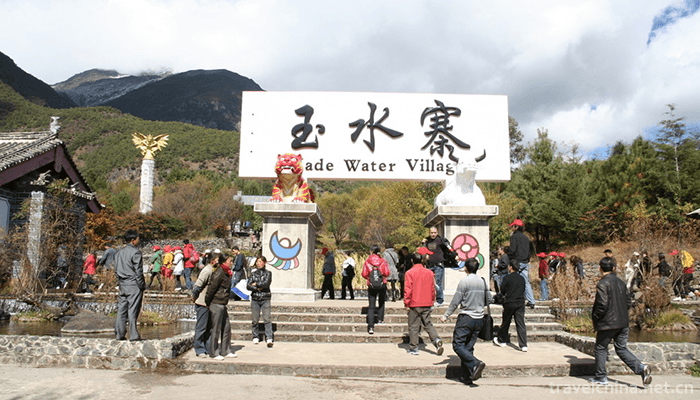
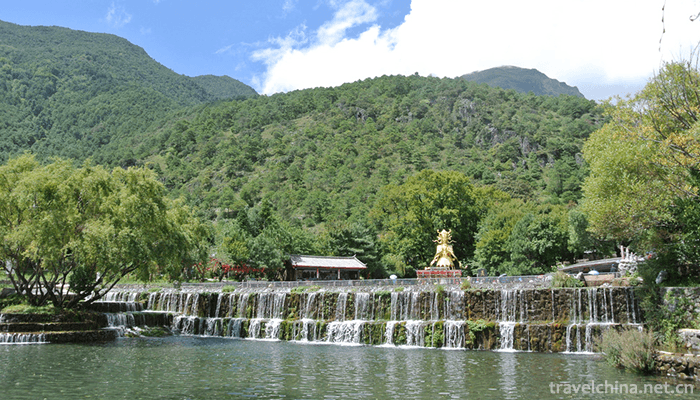
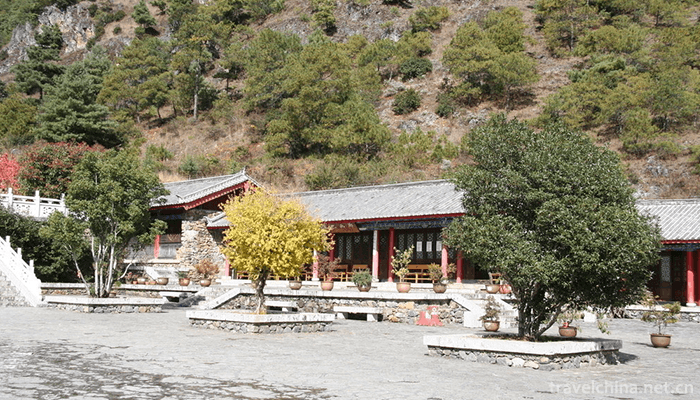
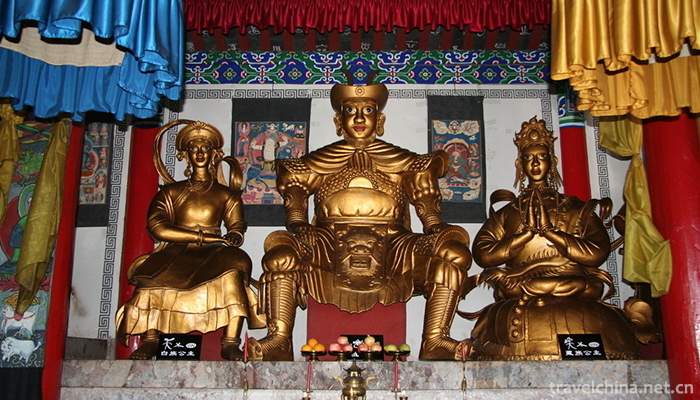
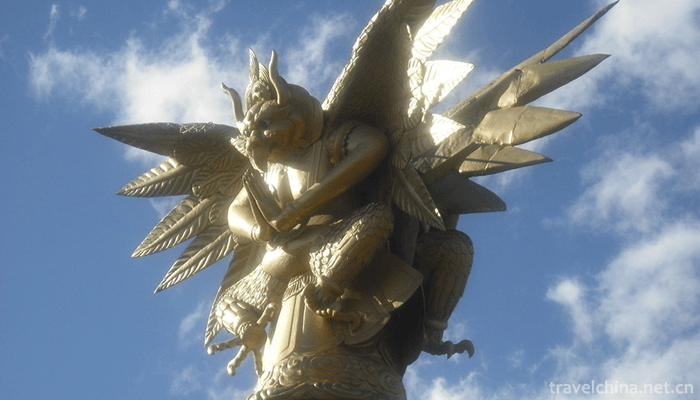
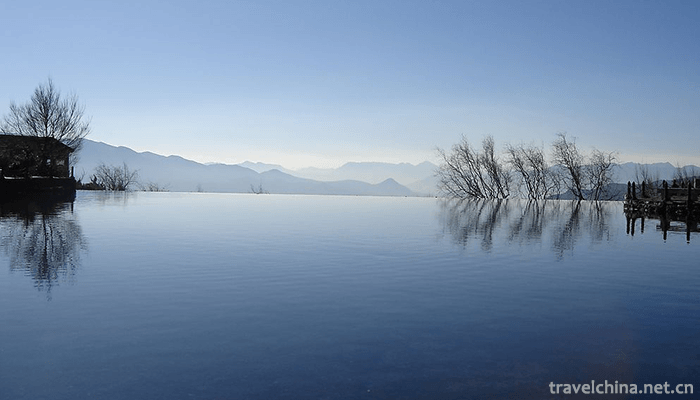

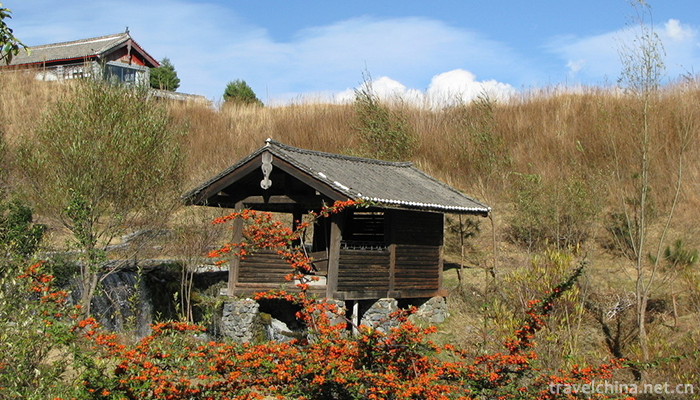
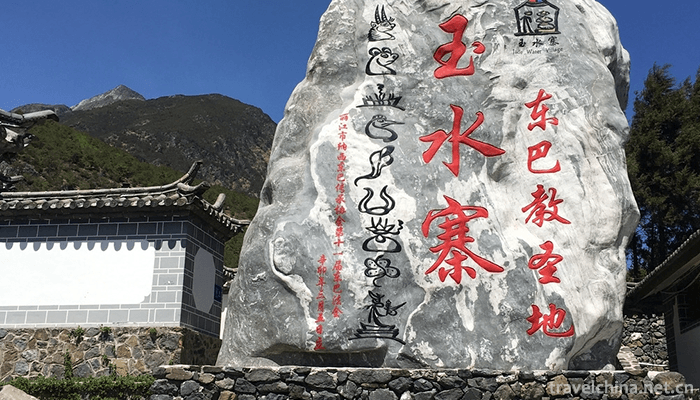
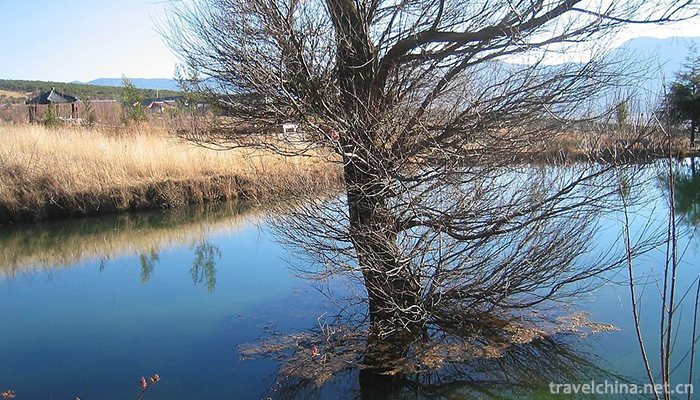
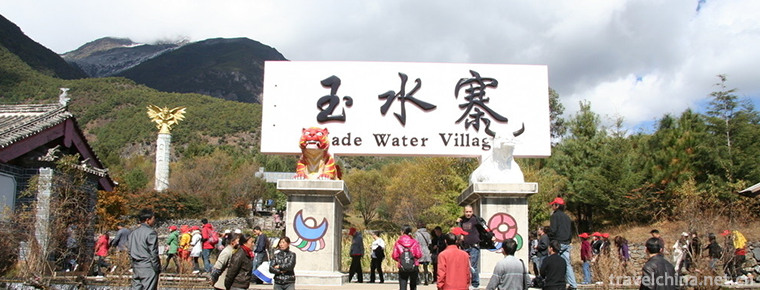
Yushuizhai Scenic Area
-
Aerhchin Mountains
Altyn Tagh is a mountain range in southeastern the Xinjiang Uygur Autonomous Region, China. The eastern end extends to the two provinces of Qinghai and Gansu
Views: 285 Time 2018-11-01 -
RenminbiChinese yuan
The legal currency of the People's Republic of China is Renminbi. The People's Bank of China is the competent organ of the state in charge of the management
Views: 219 Time 2018-11-13 -
Zhenbeibao West Film City
Zhenbeibao Western Film City, located in Yinchuan City, Ningxia Hui Autonomous Region, is a national AAAAA-level tourist attraction integrating sightseeing, entertainment, leisure, catering and shoppi
Views: 173 Time 2018-12-12 -
World Dinosaur Valley
Lufeng World Dinosaur Valley is located 23 kilometers south of Lufeng County, Chuxiong Prefecture, at Ana Village Dinosaur Mountain, Chuanjie Township. It is situated beside Kunchu Expressway
Views: 135 Time 2018-12-19 -
fengjing ancient town
Fengjing Ancient Town, which belongs to Jinshan District of Shanghai, is located in the southwest of Shanghai and borders five districts and counties of Shanghai and Zhejiang. It is the most important
Views: 129 Time 2019-01-12 -
Jiahe City Hot Spring Valley
Jiahe City Hot Spring Valley is located in Jiahe City, Nanwu Avenue, northeast of Nanning City. It is about 13 kilometers away from Nanning International Convention
Views: 391 Time 2019-01-21 -
The story of Xie Jin
Xie Jin (Dec. 6, 1369 - Feb. 22, 1415), a literary Minister of Ming Dynasty, was born in Jishui, Ji'an Prefecture, Jiangxi Province.
Views: 123 Time 2019-05-06 -
Pinghu cymbal book
Cymbals are a unique form of local traditional folk art in the Wu dialect area of Jiangnan. According to the Records of Songjiang County, it was formed in the Qing Dynasty (1821-1850). It is now mainl
Views: 152 Time 2019-06-09 -
Shijiazhuang Silk String
Shijiazhuang silk string is also known as string tune, string tune, Hexi tune, small drum tune, Luoluo tune, daughter tune and so on. It is a local traditional drama in Hebei Province and one of the n
Views: 188 Time 2019-06-15 -
Yamugou scenic spot
Yamugou scenic spot is located on the Bank of Taiping River (a famous scenic spot in Guizhou Province) in Jiangkou County, Tongren City, Guizhou Province, adjacent to Fanjing Mountain (National Nature Reserve, China's top ten famous summer resort).
Views: 169 Time 2020-10-13 -
Topography and geomorphology of Suining
Suining is a hilly and low mountain area in the central part of Sichuan Basin, with simple geological structure and gentle fold. The landform type is single, belonging to the Mesozoic Jurassic strata, which is eroded, cut and accumulated by flowing water
Views: 126 Time 2020-12-16 -
Animal resources in Guangan
There are 14 families, 30 species of mammals, 11 orders, 36 families, 115 species of birds, 19 species of reptiles and 10 species of frogs in Guang'an City. The national first-class protected birds include the Tragopan, which is mainly distributed in the forest area of H
Views: 152 Time 2020-12-19
